Market Update October 2023
The Wholesale Electricity Market
Spot prices in the wholesale electricity market were relatively unchanged through October. Average spot prices ranged from $106 in the lower South Island (down from $110 in September), up to $133 in the upper North Island (up from $127).
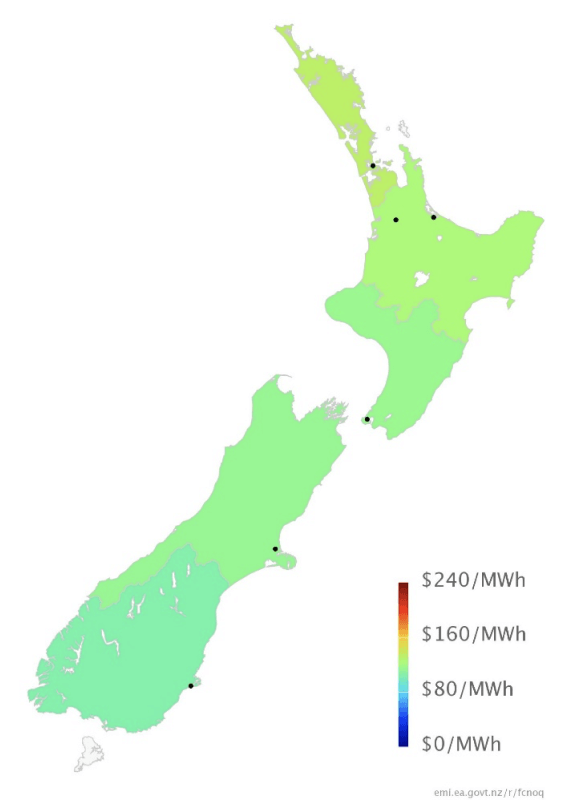
The following chart shows average weekly spot prices over the last 2 years. The sudden drop in prices in the middle of September can be clearly seen as is the recovery in prices since then.
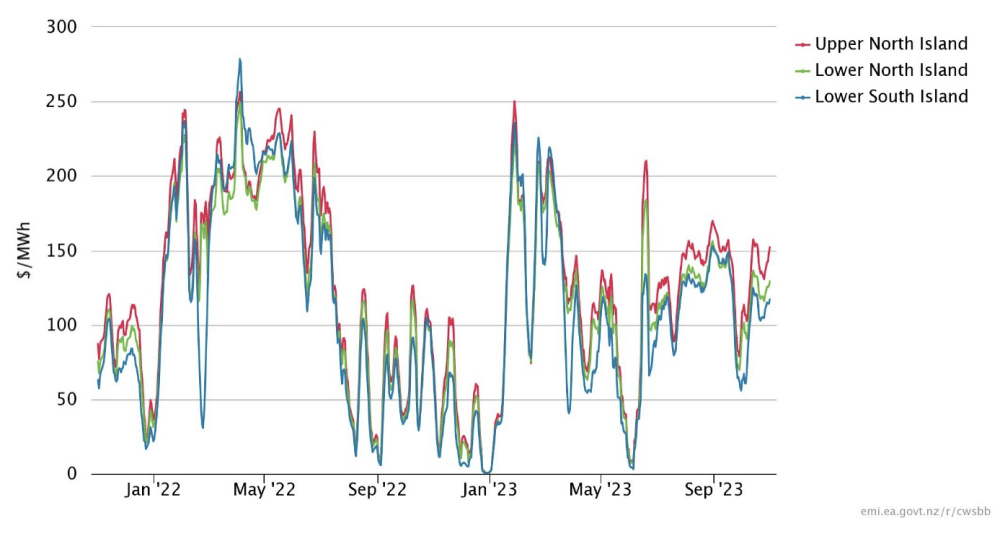
Electricity Demand
Electricity demand in early October was on a par with recent year before dropping to lower levels at the end of the month.

Electricity Generation Mix
Lower demand and increased wind and hydro generation saw thermal generation reduce to very low levels through October. The last week saw almost 95% of generation coming from renewable sources.

HVDC Transfer
Power transfers on the HVDC link connecting the North and South Islands are important both in showing relative hydro positions and the reliance on thermal power to meet demand. High northward flow tends to indicate a good SI hydro position, whereas the reverse indicates a heavy reliance on thermal power to make up for hydro shortages.
October saw northward transfer continue at the reasonably high levels seen at the end of September. Southward transfer was minimal.

The Electricity Futures Market
The Futures Market provides an indication of where market participants see the spot market moving in the future. They are based on actual trades between participants looking to hedge their positions (as both buyers and sellers) into the future against potential spot market volatility. They are also a useful proxy for the direction of retail contracts.
The following graph shows Futures pricing for CY 2024, 2025, 2026 and 2027 at Otahuhu (Auckland) for the last 2 years.
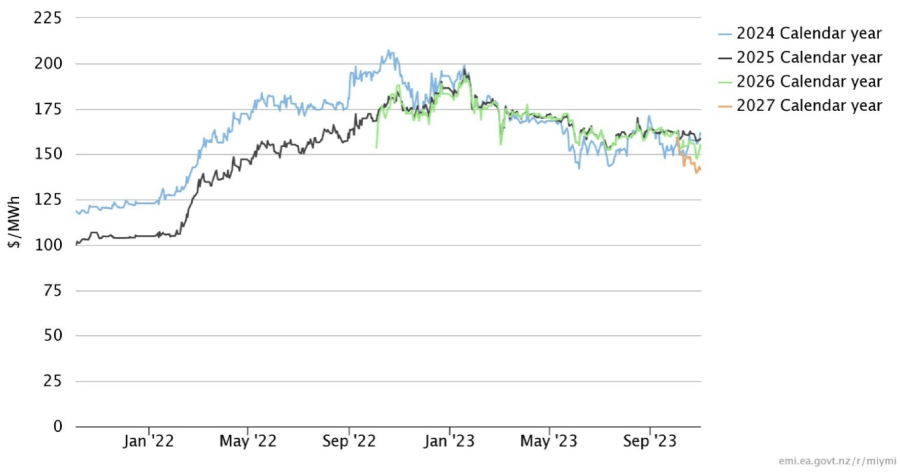
Note that $100/MWh equates to 10c/kWh.
Future prices increased for CY 2024, but was down for all other years. CY 2024 closed at $162/MWh (+6%). CY 2025 was at $158 (-2%) while CY 2026 prices was down 4% at $155. CY 2027 has just been started to be published in October – currently it is at $141/MWh (-11%).
Known new generation projects are shown below (additions / removals highlighted in bold).
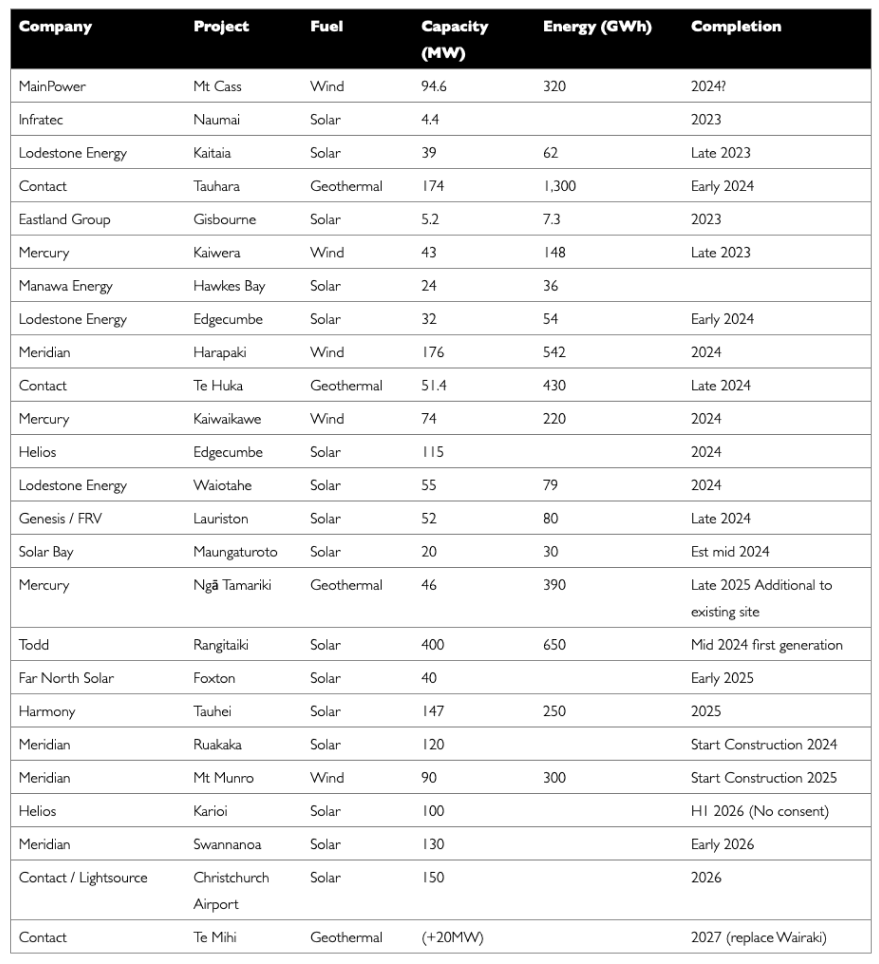
Hydro Storage
Inflows were close to average or above average in the South Island through October. Transpower has not updated NI inflows since July, however we can assume by how Taupo storage has slightly increased through the month that inflows were close to or above average for the time of year.
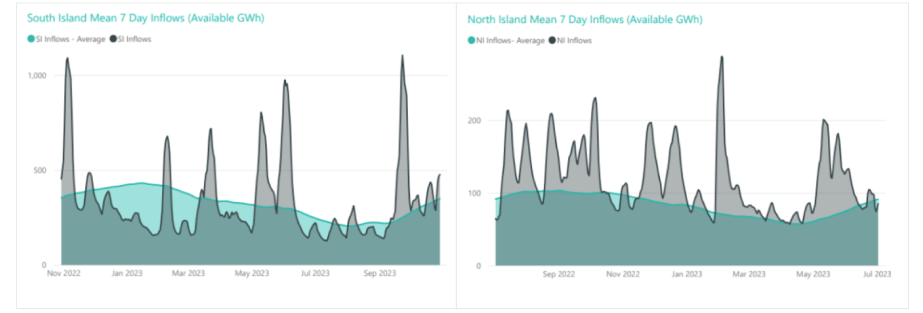
Close to or above average October inflows resulted in energy storage levels in New Zealand’s main hydro storage lakes increasing through the month. Storage ended the month at 3,051GWh or 69% full, up 124GWh. The following chart shows the latest breakdown of storage across the main hydro catchments.
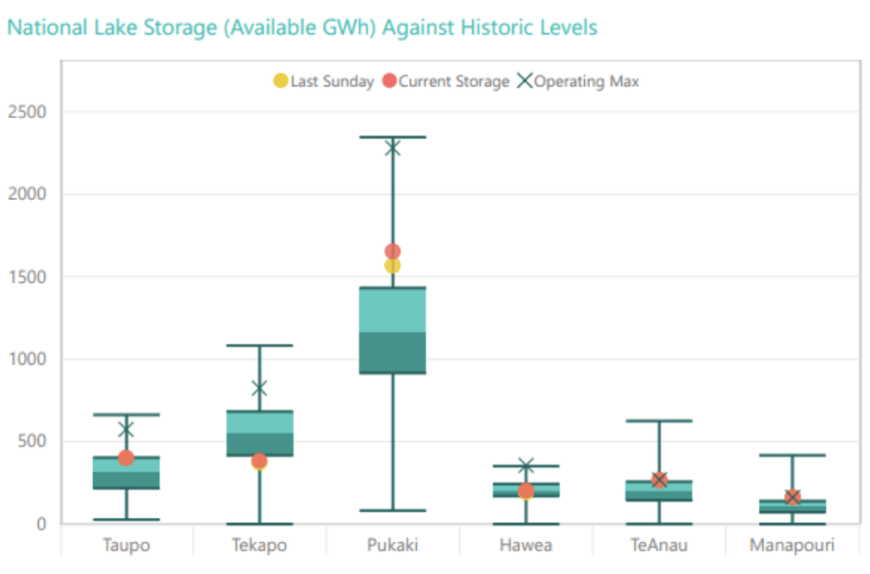
Security of supply risks decreased in October with storage levels increasing. We remain slightly above the level we would typically expect to see for this time of year; and remain well above the risk zones. This is shown in the following risk curves.
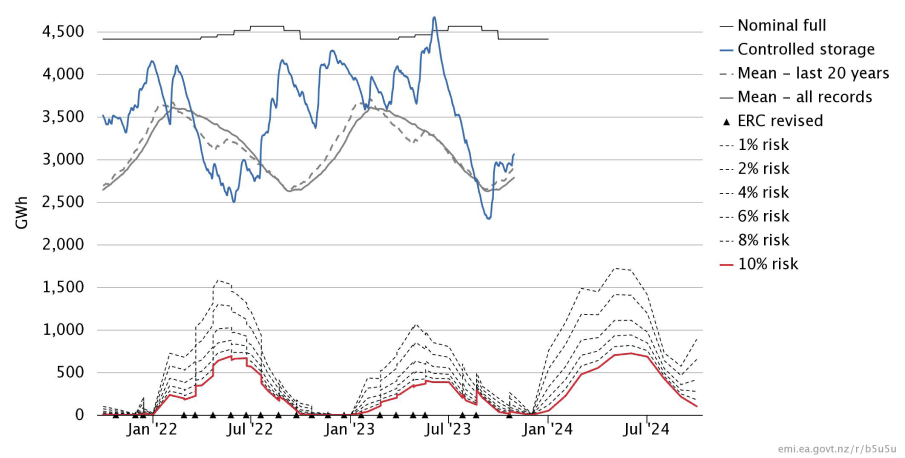
Snow Pack
Snowpack is an important way that hydro energy is stored over the winter months and released as hydro inflows in the spring. The following graph shows that the snowpack in the important Waitaki catchment is currently slightly above mean levels seen in the last 30 years for this time of year.
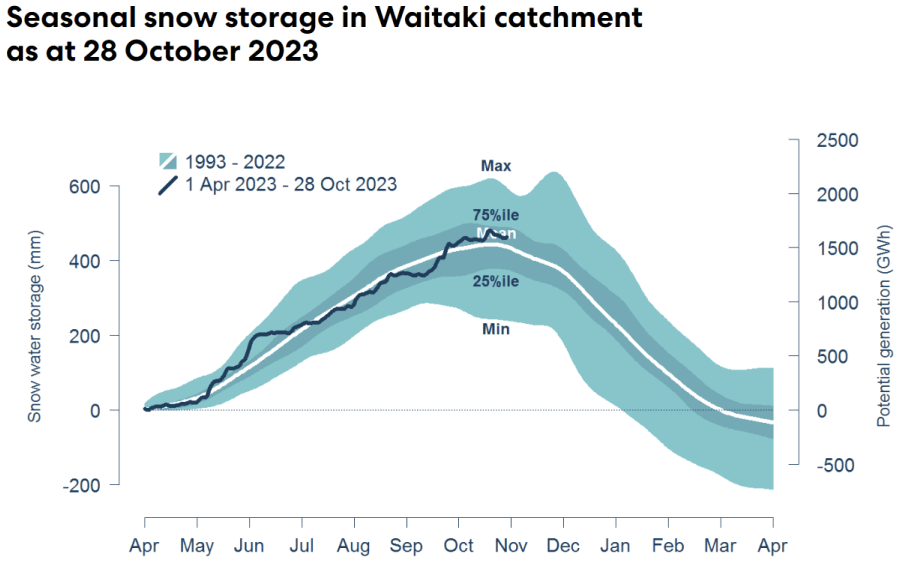
Climate outlook overview (from the MetService)
Climate Drivers — Sea surface temperatures in the equatorial Pacific Ocean NINO3.4 area continue to exceed 1.5C degrees above average, meeting the strong El Nino criterion. All climate models strengthen the event further, between now and its likely peak around Christmas, with most models forecasting an intense El Nino event for summer. Additionally, the positive Indian Ocean Dipole event also enhances the westerly flow of weather across New Zealand, alongside the El Nino.
November 2023 Outlook — November starts off with the remnants of ex-tropical cyclone Lola quickly moving away to the east, although another Tasman Sea low is likely to bring rainfall back onto the country later this week. This rain should particularly favour northern and western parts of the North Island, although some places like Southland and inland Otago could also see brief, but useful bursts for a time as well. Once this low clears away, a longer period of drier and more settled weather is expected country-wide, as a large high builds over New Zealand from the Tasman Sea. Isolated showers could occur under this high, but overall rainfall should be limited for most places. Around mid-month, we may see westerlies returning, resembling October’s predominantly westerly pattern. Fronts might move up the South Island but are likely to weaken quickly as they encounter the high over the North Island. Some of these fronts should bring slightly wetter than normal conditions to the west of the South Island, with the south seeing more uncertainty, coinciding with the return of bursts of gusty westerly winds for many places. Temperatures are forecast run warmer than average through much of the month, although a cooler period might be seen during the start to mid-month under more settled skies.
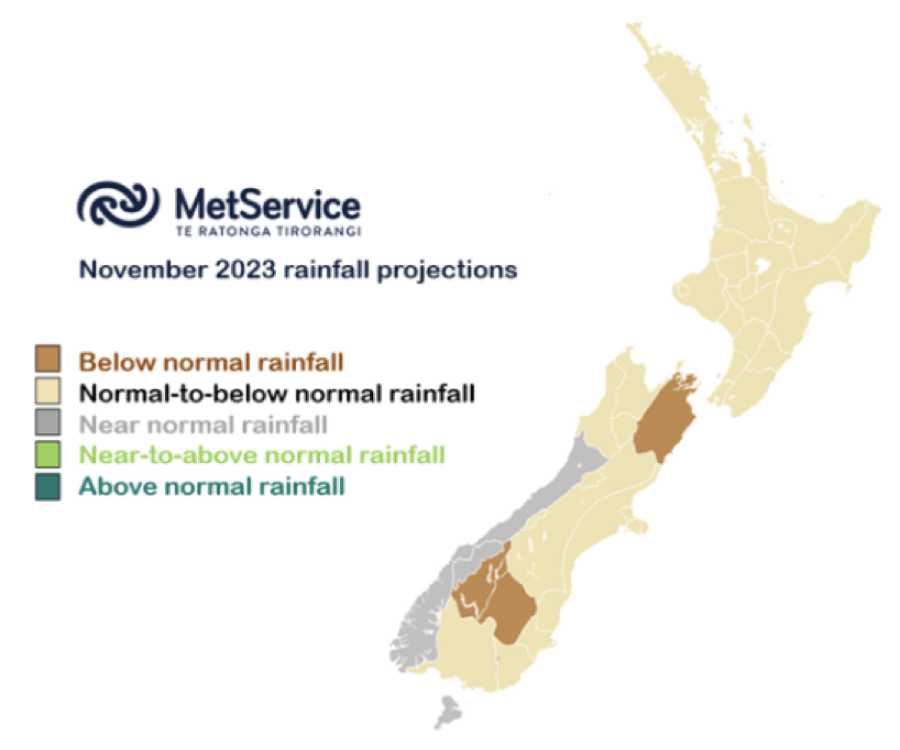
The Gas Market
Gas prices were flat again in October closing unchanged at $10.6/GJ. Prices are still about 8% lower than they were at the same time last year.
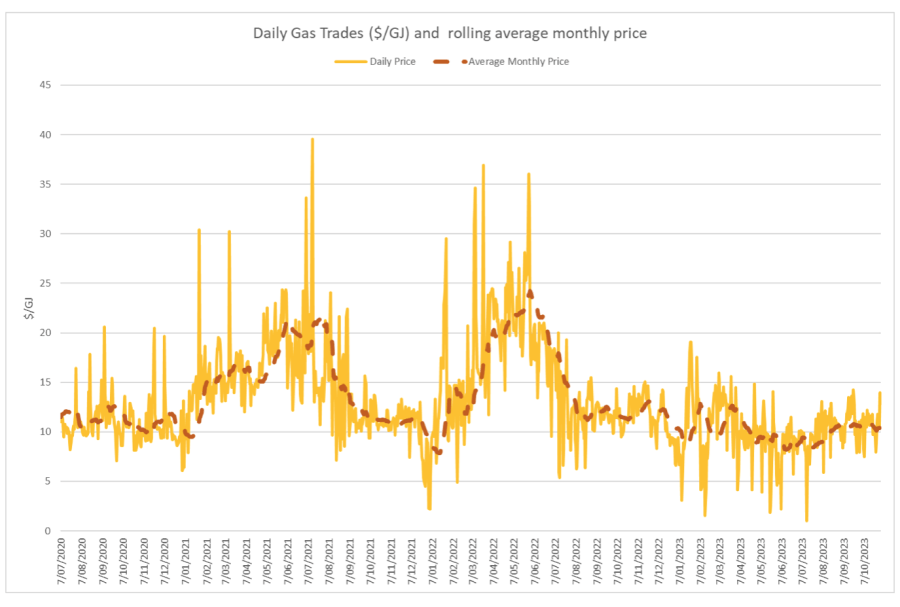
On the supply side, Maui output had a boost in October – averaging just over 100 TJ/day (up 10%). Pohokura was down, averaging 71.5TJ/day (-7%) as was Kupe where preparation work for further drilling resulted in shutdowns and an average 20TJ/day production – down 62%. McKee / Mangahewa was also down slightly at around 74TJ/day in October (-6% from September levels).
The following graph shows production levels from major fields over the last 4 years.
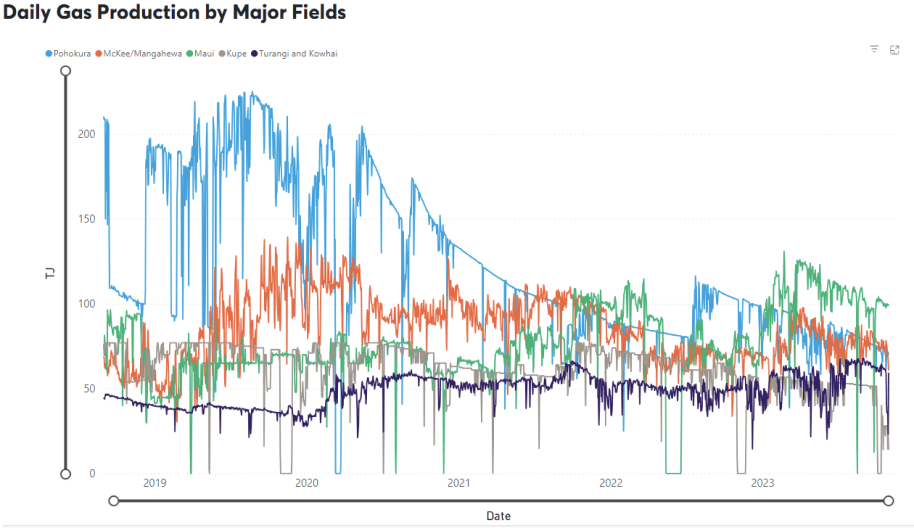
On the demand side, Methanex Motonui’s usage increased in October to around 150TJ/day for most of the month. Huntly power station gas use reduced during the month, averaging less than 30TJ/day. TCC dropped early in the month before being switched off on the 6th October.
The following graph shows trends in the major gas users over the last 4 years.
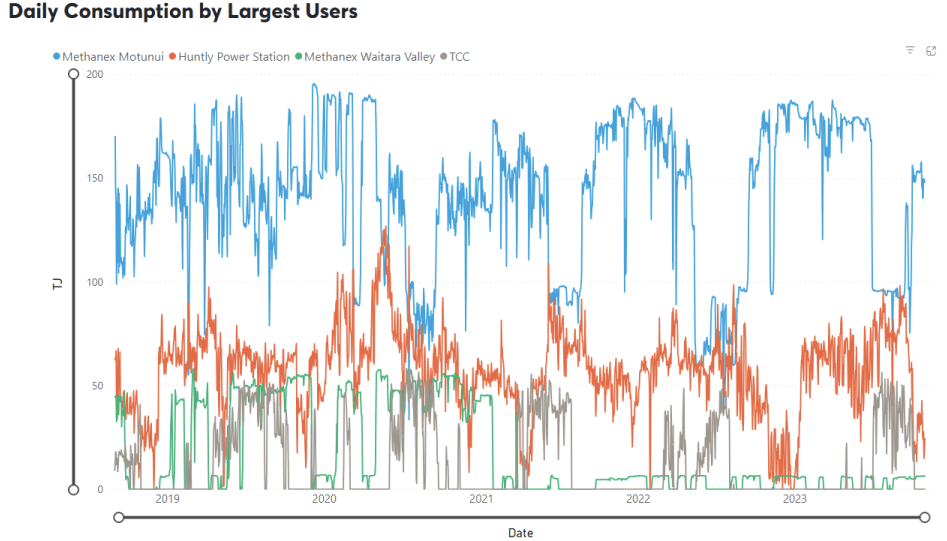
LNG netback prices ended the month at $17.99GJ – up again, 8% from last month. Forecast 2023 netback prices were also up at $19.78 – + 2% on what the ACCC was forecasting in September. Forecast prices for 2024 are now sitting at $23.3 – up 15% compared to September.
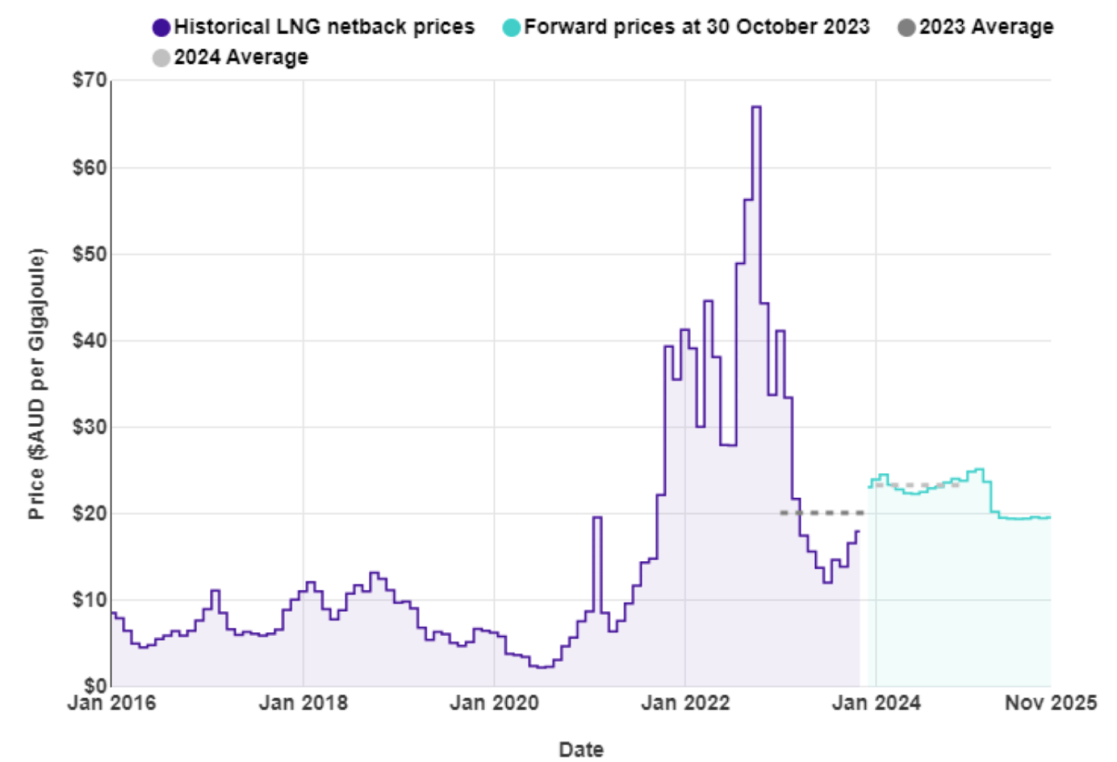
New Zealand does not have an LNG export market, so our domestic prices are not directly linked to global prices. However, some of our large gas users deal in international markets which are impacted by global gas prices, and they may try to produce more in NZ (increase demand) to take advantage of lower gas prices.
The Coal Market
The global energy crisis has been as much about coal as it has gas. The war in the Ukraine has driven energy prices, including coal, up. Prices in October reduced significantly, ending the month at US$117.5/T – a 24% decrease on the September close. These prices, though well below the highs of the last 12 months, remain above what we expect to see as shown in the following graph of prices over the last 10 years.
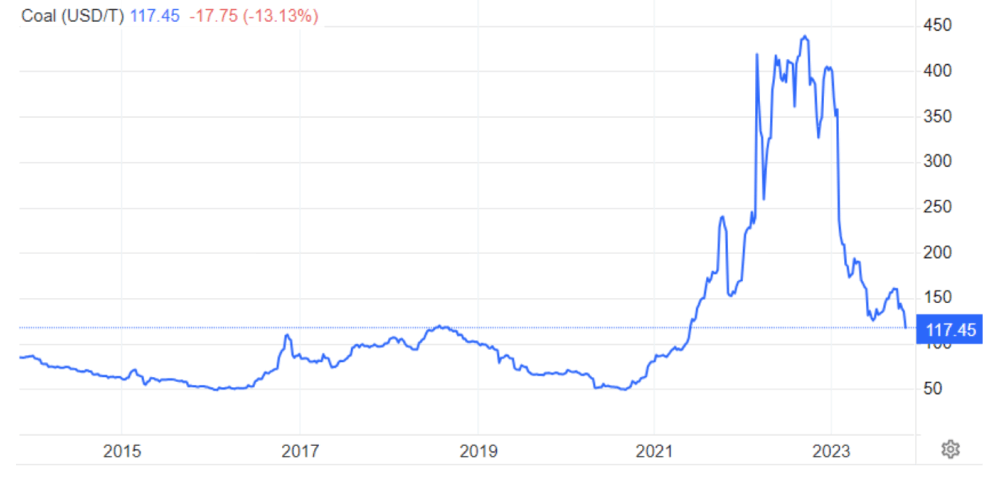
Like gas, the price of coal can flow through and have an impact on the electricity market. However, coal stockpiles at Huntly are at the highest they have been for many years helping to assure the market that there is plenty of fuel available in the event of dry conditions in the hydro catchments.
Carbon Pricing
NZ has had an Emissions Trading Scheme (ETS) in place since 2008. It has been subsequently reviewed by several governments and is now an “uncapped” price scheme closely linked to international schemes. However, there are “upper and lower guard-rails” set up to prevent wild swings in carbon price that act as minimum and maximum prices. Currently these are set at $82 and $33 respectively, however they are going to increase in December after the Government recently accepted the Climate Change Commission’s recommendations to tighten the auction scheme. Carbon prices reversed last month’s drop, increasing 7% back to $70.
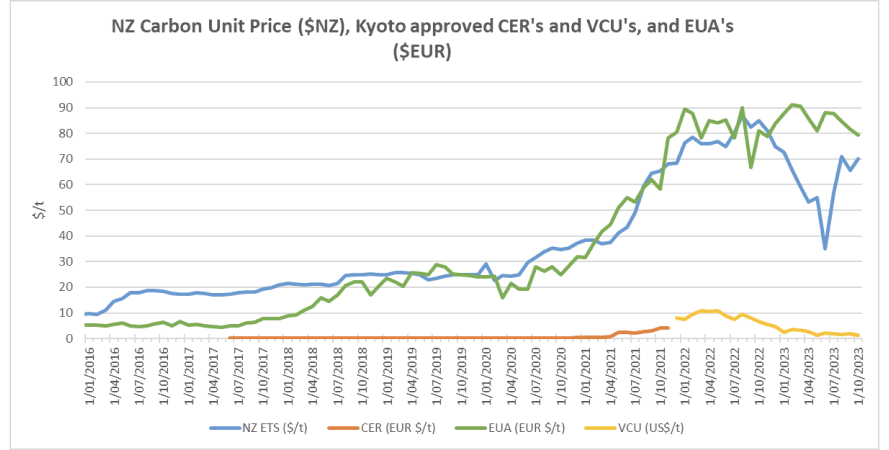
As the carbon price rises, the cost of coal, gas or other fossil fuels used in process heat applications will naturally also rise. Electricity prices are also affected by a rising carbon price. Electricity prices are set by the marginal producing unit – in NZ this is currently typically coal or gas or hydro generators, with the latter valuing the cost of its water against the former. An increase in carbon price can lead to an increase in electricity prices in the short to medium term (as the marginal units set the price). A carbon price of $50/t is estimated to currently add about $25/MWh (or ~2.5c/kWh) to electricity prices. In the long term the impact should reduce as money is invested in more low-cost renewables and there is less reliance on gas and coal fired generation.
EU Carbon Permits decreased a little further in October to 79 Euro/tonne – down 3%.
About this Report
This energy market summary report provides information on wholesale price trends within the NZ Electricity Market.
Please note that all electricity prices are presented as a $ per MWh price and all carbon prices as a $ per unit price.
All spot prices are published by the Electricity Authority. Futures contract prices are sourced from ASX.
Further information can be found at the locations noted below.
- Transpower publishes a range of detailed information which can be found here: https://www.transpower.co.nz/power-system-live-data
- The Electricity Authority publishes a range of detailed information which can be found here: https://www.emi.ea.govt.nz/
- Weather and Climate data – The MetService publishes a range of weather-related information which can be found here: https://www.metservice.com/
Disclaimer
This document has been prepared for information and explanatory purposes only and is not intended to be relied upon by any person. This document does not form part of any existing or future contract or agreement between us. We make no representation, assurance, or guarantee as to the accuracy of the information provided. To the maximum extent permitted by law, none of Smart Power Ltd, its related companies, directors, employees or agents accepts any liability for any loss arising from the use of this document or its contents or otherwise arising out or, or in connection with it. You must not provide this document or any information contained in it to any third party without our prior consent.
About Smart Power
Smart Power is a full-service Energy Management consultancy. Apart from Energy Procurement, Smart Power can also provide:
- Technical Advice on how to reduce your energy use/emissions
- Sustainability Reporting
- Invoice Management services.
We also offer boutique energy and water billing service for landlords/property developers.
Contact us at https://smartpower1.wpenginepowered.com/contact/ or ring one of our offices to talk to one of our experienced staff about how we can assist you with achieving your energy goals.
© Copyright, 2023. Smart Power Ltd